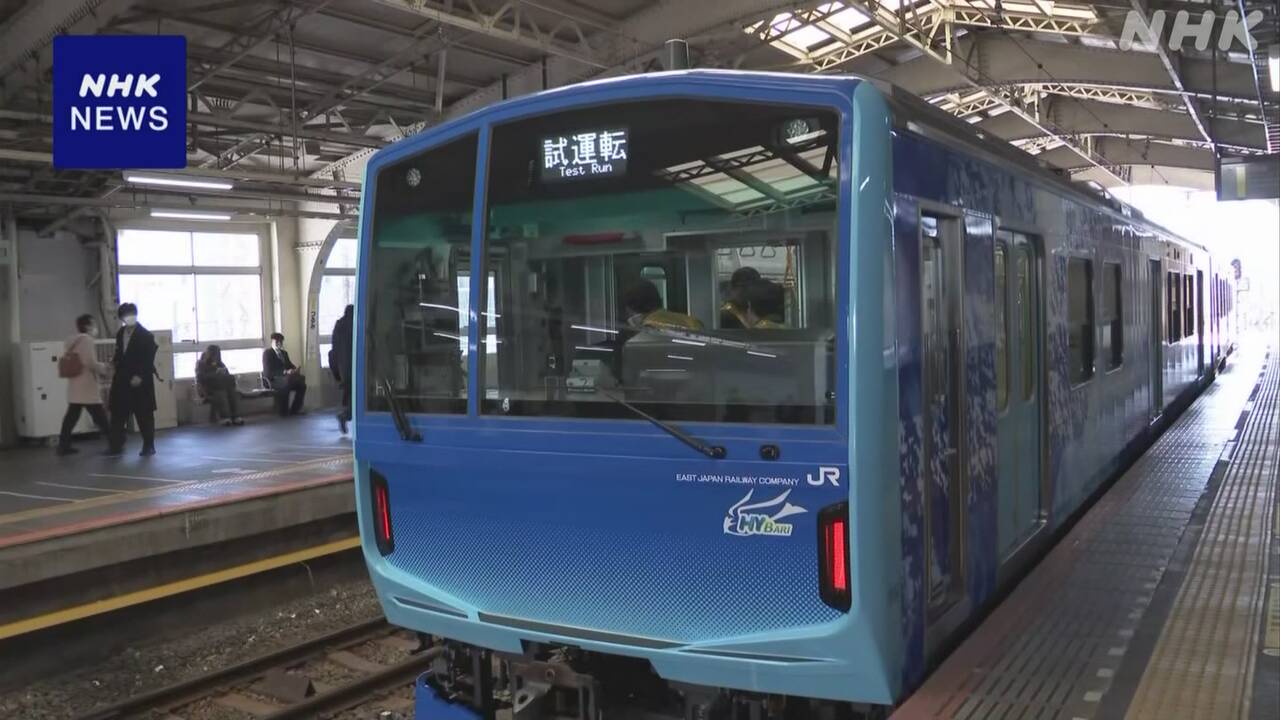On the 28th, JR East released to the press a test run of a fuel cell-powered railway vehicle that is currently being developed with the aim of commercialization in 2030.
This railway vehicle was developed by JR East in collaboration with automobile manufacturers and electronics manufacturers.
A hydrogen tank is installed on the roof, and a fuel cell located under the vehicle generates electricity by reacting with oxygen in the air, so no carbon dioxide is emitted while driving.
On the 28th, a test run of approximately 7 km was carried out on the Tsurumi Line in Kanagawa Prefecture, carrying members of the media.
Once filled with hydrogen, this vehicle can travel approximately 140 kilometers, and can reach speeds of up to 100 kilometers per hour, and the vibrations and noise inside the vehicle are almost the same as those of conventional railway vehicles.
JR East has conducted approximately 4,000 kilometers of test runs so far, and plans to make improvements to the vehicle, such as increasing the capacity of the hydrogen tank, with the aim of putting it into practical use in 2030.
Takehito Fujii, unit leader at the JR East Research and Development Center, said, ``We want to play a part in realizing a decarbonized society by reducing the use of fossil fuels in railways.''

